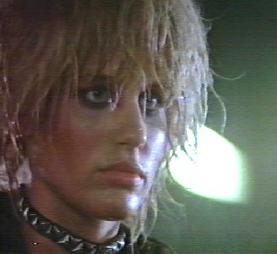Bladerunner is LA, LA is Bladerunner
December 20, 2007Apocalypse, disaster, alienation, thy name is Los Angeles.
In Bladerunner, “L.A. has become a pan-cultural dystopia of corporate advertising, pollution and flying automobiles, as well as replicants, human-like androids with short life spans built by the Tyrell Corporation for use in dangerous off-world colonization.”
In reality—hey that is reality around here!
Los Angeles has been blown up, attacked by aliens, ridden with pestilence, smashed by earthquakes, populated by murderous madmen and become a post-apocalyptic battlefield in films from Escape from Los Angeles to Terminator II, where Schwartzenneger snatches a video-playing boy from death at the insipid Valley mall by LA’s concrete river.
Then there’s The Omega Man (the original, gun-crazy zombie-slaying Charlton Heston version of I Am Legend) and Falling Down, where bespectacled Michael Douglas, fresh from a killing spree, asks “So I’m the bad guy?”
But the ultimate Los Angeles dystopia movie is Bladerunner. It’s an art director’s opium dream of LA—the stately Bradbury building is home to a genetic modification engineer and the humanesque ‘toys’ he’s built, the detective lives in a crumbling Frank Lloyd Wright house, the emblematic LA tunnel makes an appearance.
In Bladerunner, just like LA, you’ve got your perfect, highly-engineered specimens. In the movie, set in 2019, Rutger Hauer’s platinum blonde ultimate soldier nibbles hungrily on equally blonde, impossibly lithe 20-ish Darryl Hannah. Just like LA.
Later, Darryl Hannah’s character Pris, who like her fellow replicants only lives a year or two, complains of her “advanced decrepitude.” She’s a model LA woman like so many other aging ‘blondes’ finding surgeons in the back pages of Los Angeles Magazine, desperately fighting the good fight.
 In the movie, there’s an unending parade of beaten-down pedestrians, men in nuns habits, Asians of many descriptions, a Chassidic Jew and other LA types, walking numbly through the rain. In reality, LA is a dystopia of people from 170 countries who’ve come here to misunderstand one another, living in stucco houses and dining in minimalls.
In the movie, there’s an unending parade of beaten-down pedestrians, men in nuns habits, Asians of many descriptions, a Chassidic Jew and other LA types, walking numbly through the rain. In reality, LA is a dystopia of people from 170 countries who’ve come here to misunderstand one another, living in stucco houses and dining in minimalls.
In the movie, you got your cynical killer cops like M. Emmet Walsh, Edward Olmos and Harrison Ford himself as Deckard. Just as Robert Patrick’s shiny fascist LAPD motorcycle officer in Terminator II is a well-observed LA reality, Bladerunner, like the real LA, is loaded with lots and lots of cops. The movie has street patrolmen, helicopter cops, car cops, bladerunner detectives. In LA County, we’ve got a not-so-gorgeous mosaic of LAPD officers, LA Sheriff’s deputies, California Highway Patrol, Santa Monica/Pasadena/Long Beach police, even LAUSD school police and park police.
Bladerunner is LA. Oh sure, they got the predominant ethnic group and the weather wrong. In Bladerunner, it’s Asians, in 2007 LA, more than 50% of the population is Hispanics. In Bladerunner, the forecast is for perpetual acid rain, in LA, it’s dry smoggy heat, with white particulates from the fires.
But those are only details. In its anarchic chaos with its enervated residents, Bladerunner is LA in the dark.
We go through life asleep here. As the late Brion James replicant puts it, “Wake up. Time to die.”

